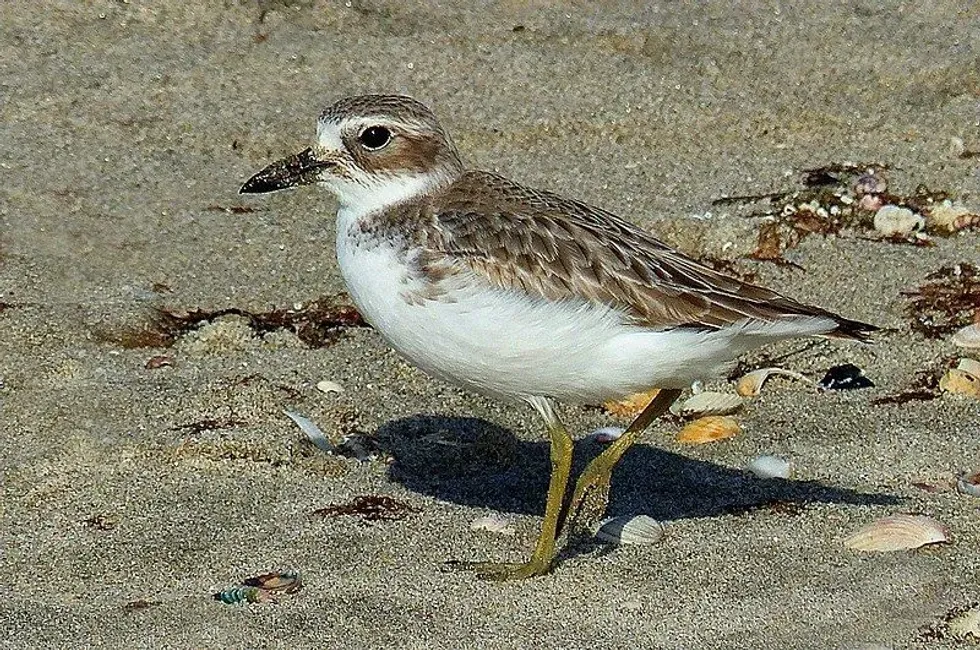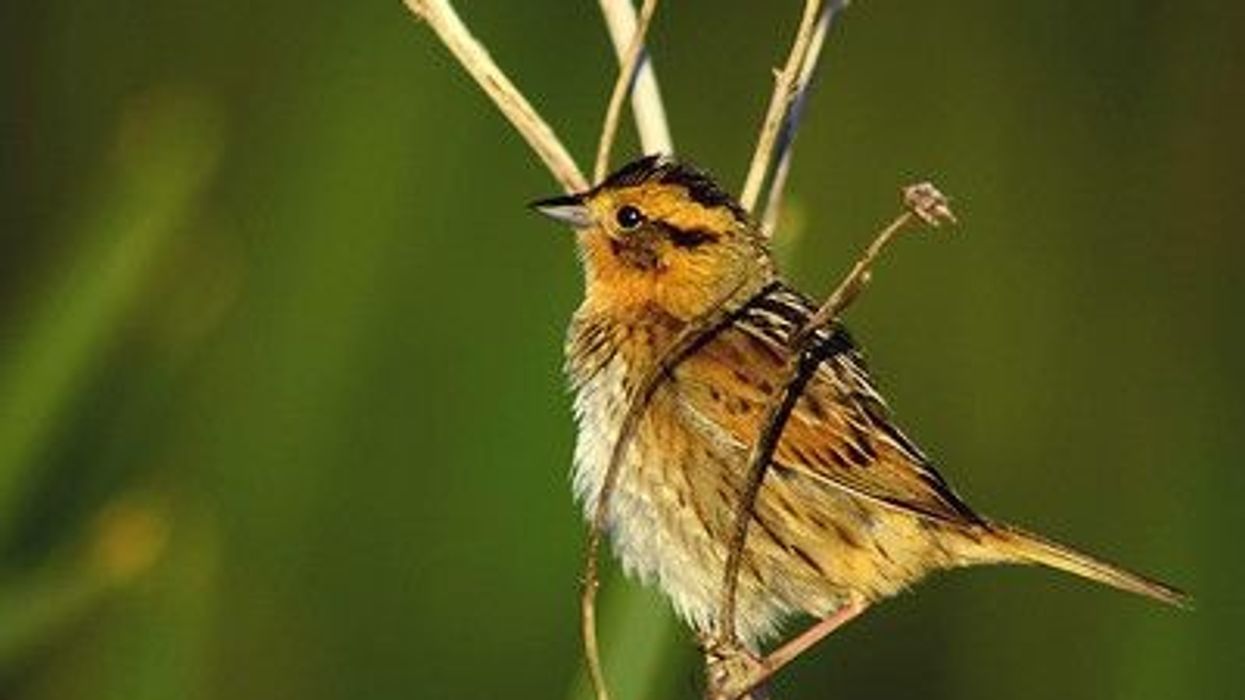New Zealand dotterels are huge with a rufous chest and a breeding plumage with a red and brown color. The non-breeding adults do not have a red color and are paler.
New Zealand dotterels (Charadrius obscurus) are red-breasted plovers. The southern subspecies make their nest on Stewart Island. The northern subspecies of New Zealand dotterels (Charadrius obscurus) make their nests on beaches and sandspits from North Island to the east coast and west coast.
After breeding they either stay in and around the nest or fly a short distance to an estuary that is nearby. New Zealand dotterels breed across New Zealand.
New Zealand dotterel's (Charadrius obscurus aquilonius) distribution and habitat include New Zealand's sandy beaches and sand spits, and they are also seen feeding in tidal estuaries. The northern population is around the North Island, while the southern population is towards the southern end of the South Island and Stewart Island.
New Zealand bird species make nests on the ground with no lining in open dunes, which are sparsely vegetated for nesting. Their nest can be near a piece of driftwood or a piece of vegetation.
Birds breeding on the coast do not migrate until nesting is over.
The other two subspecies, banded dotterels, migrate to Australia post-breeding or to the northern north island from the breeding sites. The conservation status of both these birds is at risk and endangered.
You can also learn more about other birds species with our mountain chickadee facts and umbrellabird facts.
New Zealand Dotterel Interesting Facts
What type of animal is a New Zealand dotterel?
New Zealand dotterels are a type of bird, from the family Charadriidae.
What class of animal does a New Zealand dotterel belong to?
They belong to the class Aves.
How many New Zealand dotterels are there in the world?
The total number of New Zealand (Charadrius obscurus aquilonius) present across the world is unknown. However, the 2011 breeding season census counted a total of 2075 Northern New Zealand dotterels.
Where does a New Zealand dotterel live?
This species of dark brown-red breeding birds live in certain areas of New Zealand. Their population has shrunk due to habitat loss across the northern and southern regions. The bulk of their population can be found on the east coast between the East Cape and the North Cape.
What is a New Zealand dotterel's habitat?
This species of bird lives on sandy beaches, sand spits, and is seen feeding in tidal estuaries. They usually nest in open sites, which consist of low-lying sand or sandbanks close to beaches, lagoons, or gravel banks.
They can be found close to developed or residential areas. They build their nests in a scrape on the ground with sticks, dry leaves, stones, and whatever other material they find.
Who do New Zealand dotterels live with?
These birds live in flocks or pairs, especially during nesting. Otherwise, they live alone and lead solitary lives.
How long does a New Zealand dotterel live?
This bird can live for about 12 years or less depending on its lifestyle and availability of food and safety from loss of habitat or predators like snakes.
How do they reproduce?
These red-breasted plovers, or New Zealand plovers, lay around four to six eggs during the breeding season. These birds are monogamous in nature. New Zealand dotterels are known to defend their territories from other dotterels. They mainly breed on sandspits, sandy beaches, and gravel beaches.
The incubation period lasts for around 28-30 days, and eggs are usually laid from around August or September. The chicks start flying within six to eight weeks of nesting. Red-breasted dotterel chicks feed themselves.
What is their conservation status?
Both subspecies of dotterel are considered Endangered because of human disturbance, predation, and invasive shrubs. Predators like stoats, cats, and reptiles prey on them. The conservation status of the species is endangered and at-risk or recovering. Many protection methods are ongoing to save the New Zealand dotterel.
New Zealand Dotterel Fun Facts
What do New Zealand dotterels look like?

New Zealand dotterels are huge with a rufous chest and breeding plumage with red and brown color. They are the largest species in the genus Charadrius.
The adults who are non-breeding do not have red color and are paler. New Zealand dotterels (Charadrius obscurus) are red-breasted plovers found on Stewart Island, New Zealand. The extent and depth of their red coloration vary seasonally.
However, it is observed that males have darker coloration than females. These birds have different coloration depending on the season, where their upper parts are brown, which is darker among the southern sub-species, and they have off-white underparts during autumn-early winter. It also becomes orange-red and darker among the southern birds right from May onwards.
They have a heavy, black bill with mid-gray legs. During the first winter season, these birds generally have yellowish to pale-gray legs with pure white underparts.
How cute are they?
These birds generally have an appearance that is adorable and cute. They are friendly in nature, and they are not aggressive.
How do they communicate?
These subspecies of birds give a soft keel sound call. Their territorial song sound is quite loud.
How big is a New Zealand dotterel?
These northern red-breasted birds are around 9.8 in (25 cm), which is 10 times bigger than black-capped vireo.
How fast can a New Zealand dotterel fly?
These birds can fly fast and migrate from one nest to another after nesting. However, their exact speed of flight is unknown. They may have a similar flight speed as that of the black oystercatcher.
How much does a New Zealand dotterel weigh?
The New Zealand dotterel weighs around 2.1 oz (60 g). They are much heavier and bigger than a desert finch.
What are the male and female names of the species?
The male and female of this bird do not have sex-specific names.
What would you call a baby New Zealand dotterel?
The young of these birds are generally known as chicks.
What do they eat?
They consume a wide range of marine creatures like small fishes, like anchovies, and terrestrial invertebrates. Their diet is purely carnivorous, and also includes crabs, mussels, crickets, beetles, earthworms, and other insects. They spend their time foraging for food on beaches, islands, or sea coasts.
Are they dangerous?
No, they are not dangerous as they do not produce any poison glands. They are quite friendly and do not pose any threats to humans or other living beings, except for insects which are part of their diet.
Would they make a good pet?
These birds from Stewart Island would make good pets with their friendly and calm behavior. However, considering their carnivorous diet and their preference to reside in the wild near water bodies, it may be difficult to raise them.
Did you know...
The oldest New Zealand dotterel lived for 42 years. It is believed that if they meet proper diets and take care of themselves in the wild, they can live longer than their estimated general lifespan.
The Maori's call them pukunui, kukuruatu, or tuturiwhatu.
Is the New Zealand dotterel endangered?
Yes, these birds are endangered species due to various factors, including human disturbance, predation, loss of habitat, and pollution. Over the past years, their population has declined, and it has been a great concern.
How did the New Zealand dotterel get its name?
They are found in the northern and southern parts of New Zealand, and this is how they got their name.
Here at Kidadl, we have carefully created lots of interesting family-friendly animal facts for everyone to discover! Learn more about some other birds from our hummingbird facts and Alexandrine parakeet facts pages.
You can even occupy yourself at home by coloring in one of our free printable dotterel coloring pages.









